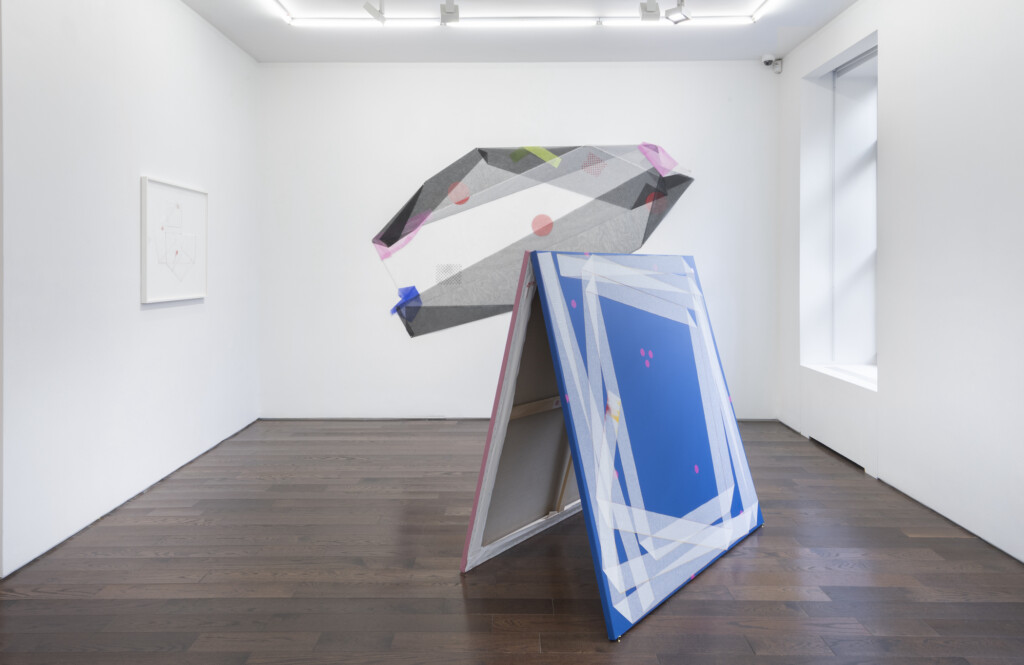Who would trade the fairy tale-esque villages of Luxembourg with the town houses of the Upper East Side? The answer, it seems, is Ceysson & Bénétière director Maëlle Ebelle, who moved to New York in May of 2023 to run the gallery’s Madison Avenue location. With spaces across France, Switzerland, Luxembourg, and New York, the gallery has established its global influence, in part thanks to Ebelle. Bringing her European expertise to New York, Ebelle joins associate director Francesca Pessarelli in overseeing Ceysson & Bénétière’s only U.S. outpost, which opened in 2017.
“I love the Upper East Side,” Ebelle tells Avenue. “The proximity with all those beautiful institutions and amazing galleries is really stimulating. I am at the beginning of this new artistic life and very excited about it.”

Photo by Cyrille CauvetEbelle’s journey parallels much of Ceysson & Bénétière itself. She was born in France and grew up in Saint-Étienne where the gallery has a stunning, sprawling location, though that came years later. She studied history at the Université Jean Monnet, Saint-Étienne, and art history at the Université Paul Valéry Montpellier 3. From there, she went to South Africa to continue her studies at an international school.
Embarking on her professional career, Ebelle joined Ceysson & Bénétière in May 2012 in Switzerland at the gallery’s Geneva location and remained for two years before moving to Luxembourg, where the team was working towards opening a new space. She took the helm of the Luxembourg outpost as director in 2017 and worked there until her arrival in New York last year. The move, Ebelle explains, was a long time coming.
“Moving to New York is a project we’ve thought about with François Ceysson and Loïc Bénétière since the opening of the Upper East Side gallery in 2017,” she explains. Like so many other plans underway during the pandemic, the gallery had to wait until the timing was right. “Patience has been the best ally,” she says.

Photo courtesy of Ceysson & BénétièreServing as the director of both the Luxembourg and Upper East Side spaces, Ebelle plans to help the gallery further develop its transatlantic influence. “The program of the New York gallery differs a bit from the European locations,” she explains, adding, “but don’t forget that New York is a fantastic platform for European artists.”
To this end, Ebelle has helped stage exhibitions by some of the European artists on the gallery’s roster, including a celebrated, multimedia show by Paris-based Jean-Luc Verna from October to December of 2023 that explored themes ranging from queer culture and Greek mythology to art history and underground rock.
“I discovered Jean-Luc Verna years ago,” Ebelle says. “The entire installation of the show was a dialogue between us, a perfect moment. It is the way I like to work with the artist. My favorite piece was a work from 2023 called Mimine. I love the construction of it. We can see the technique Jean-Luc uses — quite academic — and I love the stickers on top of it, which trouble the academism of the original drawing!”

Photo by Marc Domage, courtesy of Jean-Luc VernaEbelle has also assisted in developing Ceysson & Bénétière’s strong program of exhibitions by artists from Supports/Surfaces, the art collective that emerged in 1966 in the South of France during a nationwide period of civil unrest. The revolutionary artists believed in the importance of the materiality of painting stripped down to its fundamental elements: the supports and the surfaces. Ceysson & Bénétière has long been a leader in Supports/Surfaces, championing artists such as André-Pierre Arnal, Noël Dolla, Patrick Saytour, and Claude Viallat. With its Upper East Side location, the gallery has helped introduce these artists to new audiences.
The team has also expanded its roster, bringing in rising stars of the industry, including Brooklyn-based artist Rachael Tarravechia. They plan to continue to tap into the vast network of artists in New York over the years. “We are trying to foster new collaborations with local artists, while standing with the European artistic line of the gallery,” Ebelle says.
This interest in both European and American artists is apparent throughout Ceysson & Bénétière’s program. The recent solo show “Never Ever Land” saw American artist Adam Himebauch turn the gallery space into a bedroom, sleeping in a live-streamed performance that considered the legacy of audience participation in performance art, a concept spearheaded by Serbian artist Marina Abramović.

Photo by Adam Reich, courtesy of Ceysson & BénétièreFor its spring show, Ceysson & Bénétière is continuing its cross-cultural dialogue with a solo exhibition of work by New York-based, Belarusian artist Alina Bliumis. Known for her dynamic practice that spans painting, drawing, printmaking, weaving, and sculpture, Bliumis creates stunning pieces that address a wide range of issues from the environmental impact of climate change to identity, migration, bodily rights, and the history of war. Her striking, anthropomorphic drawings of endangered flowers in the show have custom frames that the artist hand carved.
“We have been interested in Alina’s works for a while now, keeping an eye as part of art fairs and group shows, and the occasion to present her work in March was a perfect match for both her and the program,” Ebelle enthuses.
While it took patience for her to move to New York, Ebelle’s tenure on the Upper East Side is flourishing at rapid speed. For her and the Ceysson & Bénétière team, the future promises an even deeper transatlantic cultural exchange.
“Florephemeral,” a solo show by Alina Bliumis, runs March 21–April 27.


